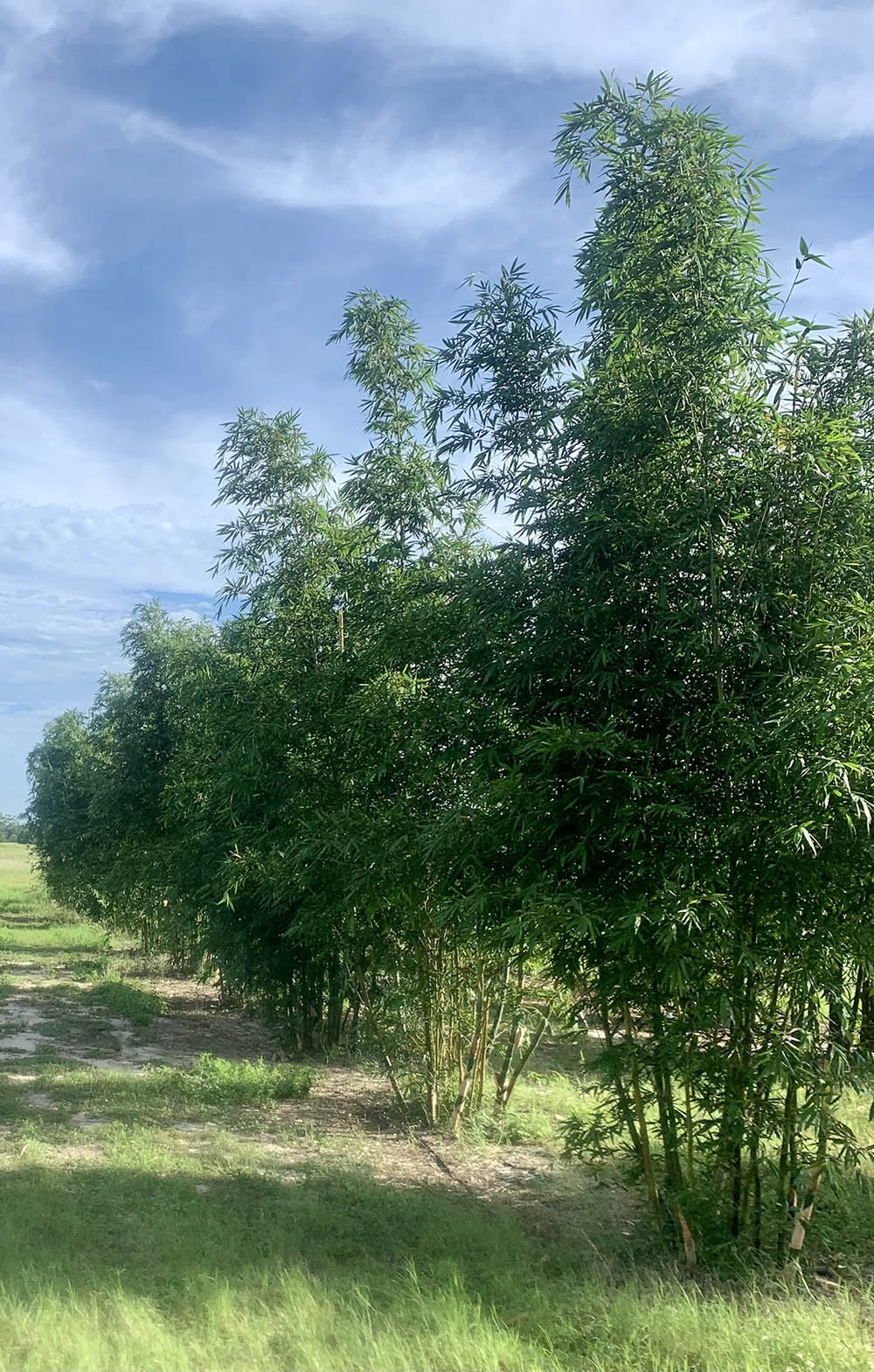By Frank Giles
Farmers, by nature, are industrious and curious about finding new ways to become more efficient and profitable. That includes finding the next big crop that could diversify the farm and spread risk.
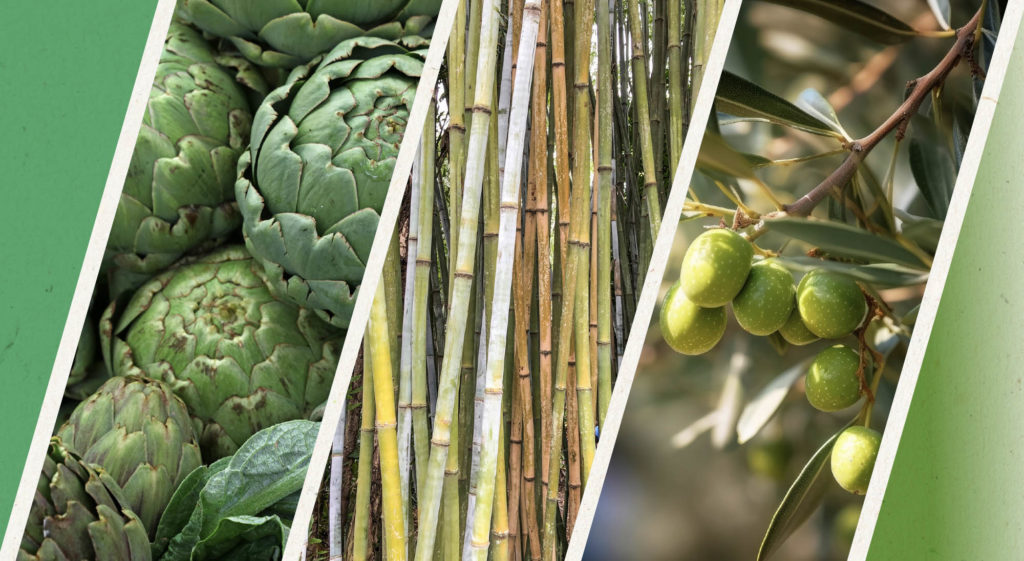
In Florida, the desire to find alternative crops has intensified as citrus acreage has declined in recent years. Often, these crops face obstacles like lack of infrastructure, climate, pests, poor markets and more. But the quest continues for growers seeking the next big thing in farming. Here are a few alternatives that have captured grower attention in recent years.
BAMBOO
Bamboo grows well in Florida. So much so that state officials worry about its invasive tendency. But backers of bamboo argue that the clumping varieties have less invasive tendencies compared to the runner types. And it has potential as a food and wood product crop.
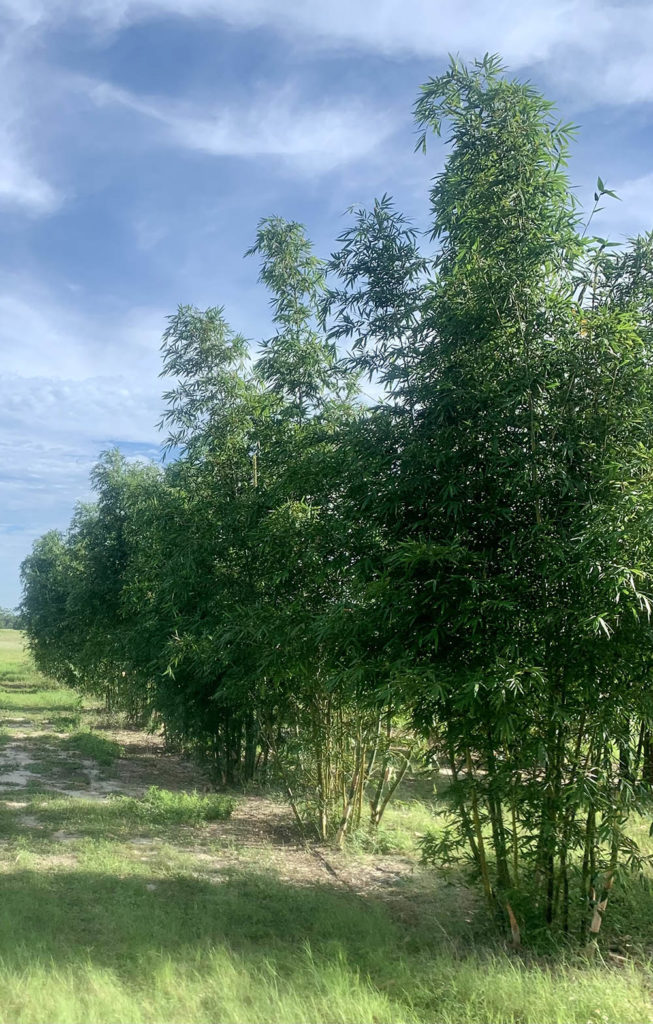
Work is being done to identify the best varieties suited for Florida’s climate. The Asper varieties have done well in the field and in trials.
According to Phil Rucks, owner of Phillip Rucks Citrus Nursery, the Oldhamii variety also has potential.
“It is a really old variety that has been in Florida for a long time. It grows a big culm and is cold hardy,” Rucks says. “Young plants can withstand temperatures down to 15 degrees, and older plants can go down as low as 10 degrees.”
Rucks and other bamboo supporters worked with Florida state lawmakers last year to pass a block grant that would have helped fund growers interested in planting bamboo through a cost-sharing program. The legislation got delayed this year, but Rucks says indications are it will have a better shot at passage in the next state legislative session. The bill will be called the Alternative Crop Initiative Act.
“We were hopeful that we would have gotten the block grant last year, because it will help prospective growers cover a lot of the upfront investment of planting bamboo,” he says. “But in some ways, it has been beneficial in that it gave us time to get more organized in moving the industry forward.”
The big question is infrastructure when it comes to processing the plants into wood products. Rhizome Bamboo is moving forward with plans to build a wood processing facility in Hardee County. The company is developing the project in conjunction with the Hardee County Industrial Development Authority.
Rucks says the manufacturing facility would import bamboo while growers in Central Florida plant their crops and grow them to maturity. He says progress has continued in the past year toward making bamboo a viable alternative.
ARTICHOKE
For growers looking to develop a local niche market crop, artichoke might be an alternative to consider. Since 2017, researchers with the University of Florida Institute of Food and Agricultural Sciences (UF/IFAS) have been studying if artichoke could be successfully planted in Florida. The former director of the Hastings Agricultural Extension Center, Gary England, was instrumental in starting the artichoke research.
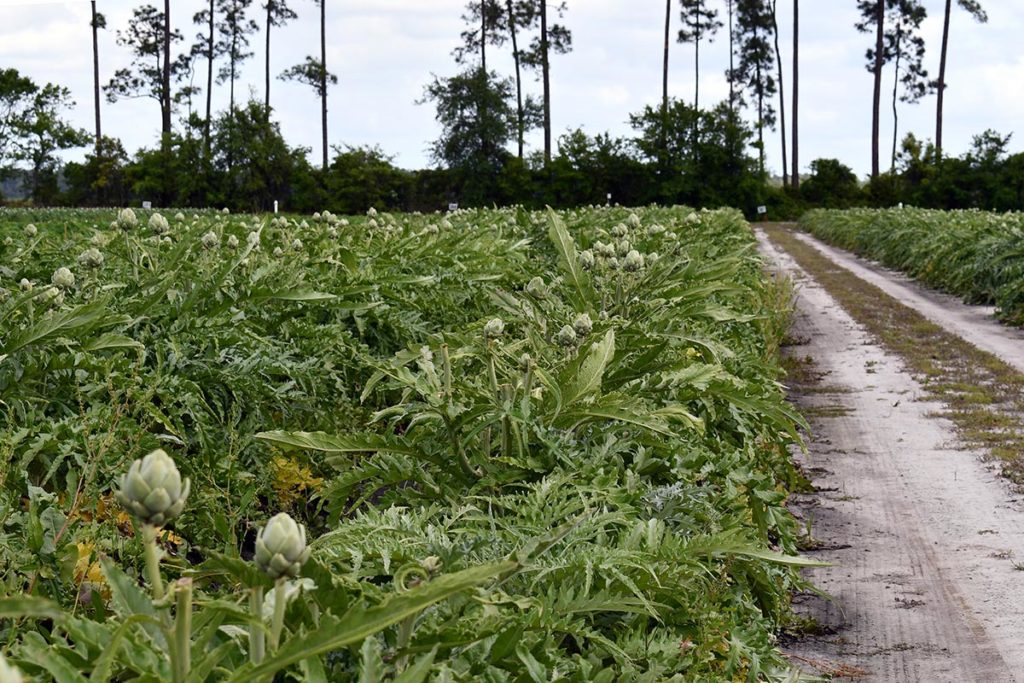
The crop is grown mostly in California, an arid climate much different from Florida. But UF/IFAS scientist Shinsuke Agehara has found a way to trick the plant into an early vegetative stage and bud development with gibberellic acid. This allows the plants to produce a crop in Florida’s environment.
Prissy Fletcher, St. Johns County Extension agent, has taken on the artichoke project and has overseen the production of several successful crops. She has identified the varieties that fit in that region of the state. The Green Queen is the top performer, with Imperial Star coming in second
“Many of my small farmers are wanting to plant artichokes because of what we learned last year at our farmers’ market project,” Fletcher says. “Retail shoppers were willing to pay $4 per globe for the edible commodity and $5 for the cut flower. This was very valuable economic feedback and encouraged us to keep the plants in the ground post-harvest. We can produce large, fragrant and unique flowers just in time for Mother’s Day if we plant them by early November.
“Dr. Agehara has partnered with Pero Family Farms for his research, and we hope their success will inspire others to test this commodity. With the vast majority of artichokes coming from California, Florida-grown artichokes can reduce our carbon footprint while providing a fresher commodity to consumers and diversifying our farms.”
OLIVE
Olive is another alternative crop that has captured interest among growers. But to produce fruit, plants need ample chilling hours in the winter. To date, that has hindered the development of the industry in Florida. There are about 800 acres of olives in cultivation in Florida, mostly in the northern part of the state. Not far away in Georgia, growers have been able to establish a niche and are producing high-quality olive oils.
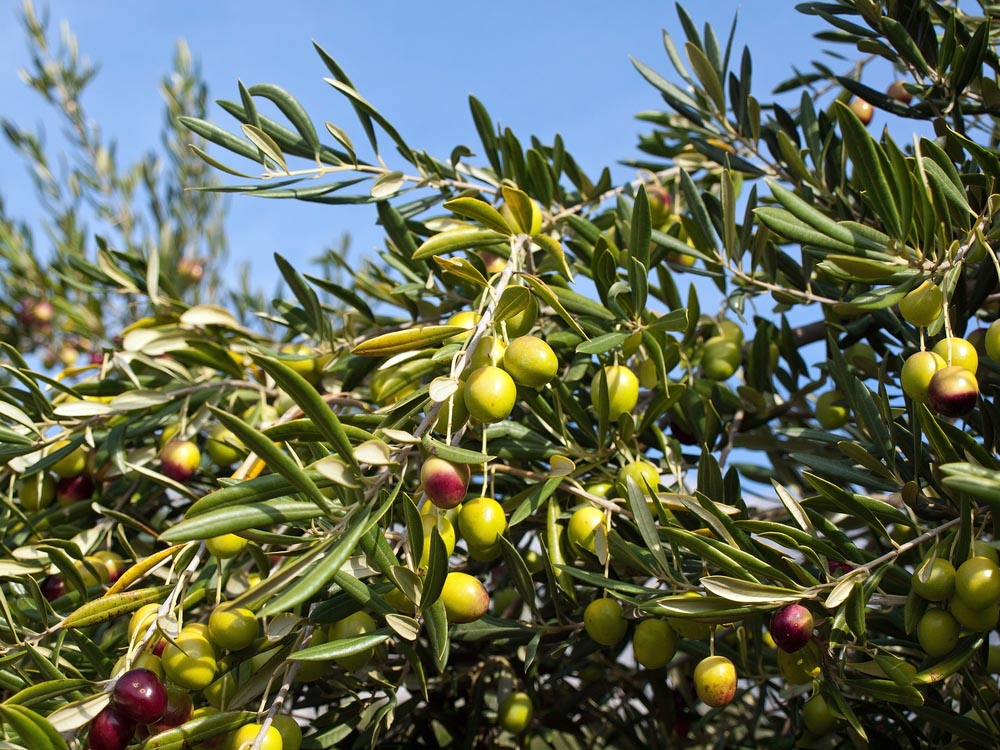
The Florida Olive Council (FOC) was established in 2011 to help growers who are interested in the alternative crop. The Council has invested resources in developing lowchill varieties that could be capable of producing fruit on a consistent basis.
Olives cultivated in the United States are principally drawn from stocks native to the Northern Mediterranean. These varieties require up to 600 chill hours per year. Much of South Florida gets nowhere near that number of chill hours.
The FOC and its partners evaluated several Southern Mediterranean (SoMed) varieties to identify an olive variety that would reliably bloom and fruit south of the I-4 corridor. The Council, in partnership with UF/IFAS, the Hardee County Industrial Development Authority and South Florida College, propagated 40 varieties of accessions from true-to-type mother trees native to the Middle East/ North Africa, South Australia, South America and Mediterranean islands. Research has shown that certain SoMed varieties bloomed and set fruit in 2021 and 2022.










